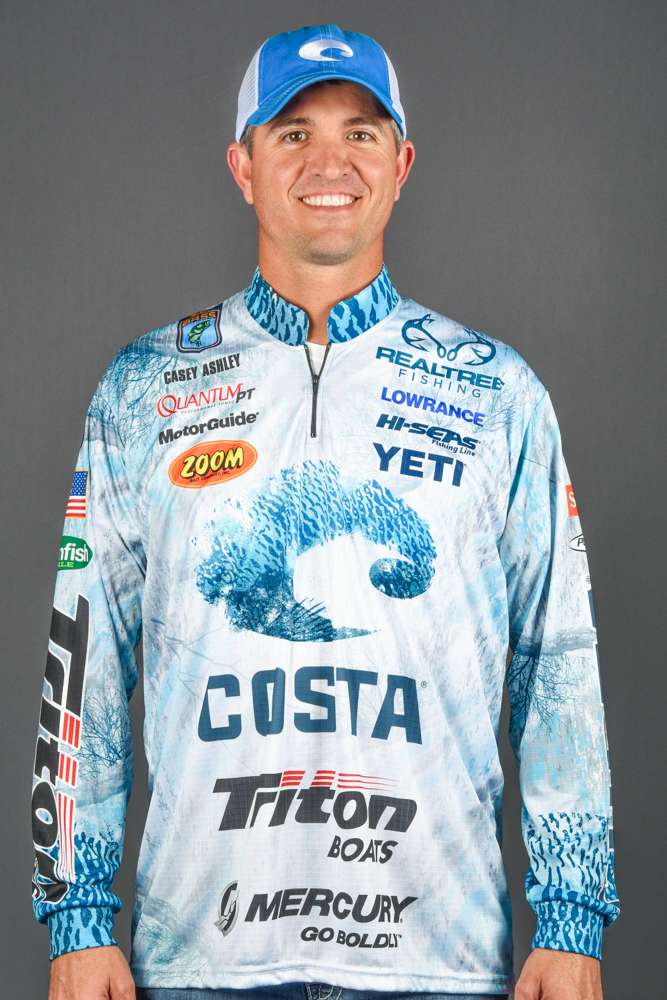
Fall is one of my favorite times of the year to fish because of the opportunity to catch big bass. Coming off of summer, everything is starting to cool off and your big fish are starting to move shallow again to feed up for winter.
Also, this time of year, most reservoirs start dropping lake levels, but the fish want to be shallow. We’re programmed to think that the water’s dropping so the fish are going to pull out. But in the fall, that’s not necessarily the case.
The fish are moving shallow for three reasons: oxygen, food and any cover they can find. You combine all of those things and that’s topwater heaven. There’s not going to be that much cover left in the lake, so whatever isolated stumps, the tops of blowdowns, the front two posts of a dock are left, it makes for easy pickings.
Looking for bait schools is a big part of this. Your electronics are going to show you the creeks that have freshwater running in and the last channel swing in a creek before it gets up on a flat. That’s stuff that fish use in the fall, more so than in the summer, because that’s what the bait follows.
As far as locating the bait, most of the time, you’re going to be able to see that and the isolated cover with your eyes. This time of the year, I depend on my Costa polarized sunglasses for spotting the bait and the cover.
I like the copper lenses because I’m mildly color blind and that type of lens keeps everything bright enough for me to pick out my targets, but still dark enough that I can wear them on those really bright days.
As far as baits, this is a great time to fish topwaters — my favorite way to fish. Specifically, I like a popper and a buzzbait in the fall. In early fall, when the water is just starting to cool, that makes the fish scatter. In this scenario, you want to make a commotion and cover a lot of water.
I also like an unweighted Zoom Super Fluke in white or bubble gum this time of year. If you’re in a lake with hydrilla, when the water comes down, those sparse clumps around the edge are great targets for that fluke.
I’ll work it slowly and out of sight, but I’m still keeping it up in 1 1/2 to 2 feet of water. For a different look, I really love to throw an unweighted merthiolate Zoom Trick Worm around those grass edges. I don’t know what it is about that color, but the fish really eat it in the fall.
I’m trying to walk the dog below the surface with this bait. It’s staying out of sight, but staying in that 0- to 2-foot water column. I think that merthiolate color is just so bizarre that they just react to it.
That fluke is also a good bait for probing that isolated wood cover when the water’s low. Especially when have a solitary stump out on the end of a flat or the very end of a blowdown. That fluke is slow enough that it allows them to get it, but you can still cover water with it.
I’ll typically keep a fluke on my deck whenever I’m topwater fishing for a couple of reasons. For one thing, the Fluke is weedless, so you can get it into tighter cover than you can wind a topwater through.
Also, I’ll use the Fluke as a follow-up bait in case a bass misses the buzzbait or the popper. You can flip back in there and you can often get them on the subsurface presentation.
Now, one last pattern I’ll point out is a good one for the latter part of fall and that’s ripping a lipless crankbait through the middle of the creek channel. When you start getting those cooler nights and the water temperature gets down into the high 50’s, those fish will still be in the backs of those creeks feeding on bait, but they’re going to be more pulled out to the middle where they’ll relate to the ditch.
I like the Livingston Pro Ripper in shiny patterns like chrome blue or chrome black and I’ll go with a 1/4- to 3/8-ounce size because the fish are mostly feeding on smaller baits.
This is definitely an exciting time of the year to be fishing. The bass are feeding and the lakes are usually less crowded because so many people are hunting. You couldn’t ask for a better deal.

